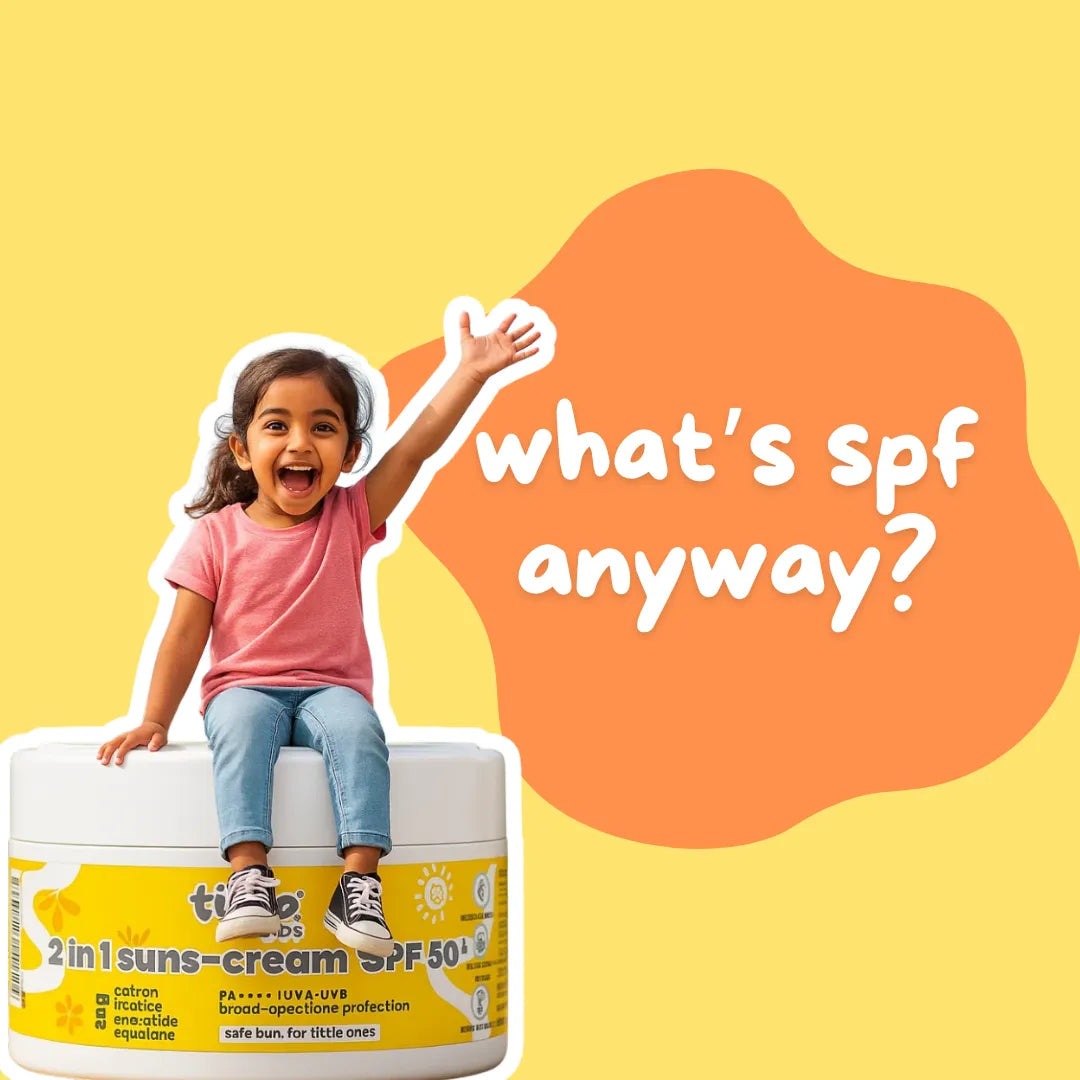
“What’s SPF, Anyway?” — How My Nephew Turned Me Into a Skincare Investigator
By Maha, a full-time mom & a full-time tech professional
The Question That Sparked It All
The other day, my 7-year-old nephew Kapil asked, Before I could give him the usual “because it protects your skin,” he followed up with:
Before I could give him the usual “because it protects your skin,” he followed up with:
I paused. I didn’t really know.
Like most parents, I apply sunscreen because I’ve heard it’s essential. But I had no idea what those long ingredient names on the back of the tube actually meant—especially when it came to something going directly onto a child’s skin.
So, I did what any slightly panicked adult would do—I Googled it. And what I found was eye-opening.
What’s Really Inside Most Sunscreens
Let’s start with this: not all sunscreens are created equal. Especially the ones marketed for kids.
A lot of them contain ingredients that sound scientific, even harmless, but can be surprisingly harsh for young, developing skin.
🔍 Common Chemical Ingredients to Watch Out For:
- Oxybenzone – A chemical filter linked to skin irritation and potential hormone disruption. It’s been banned in some countries for environmental reasons and flagged for safety concerns in children.
- Benzophenone – Another UV filter that’s effective but associated with allergic reactions and skin sensitivity.
- Octinoxate, Homosalate, Octocrylene – Common in many sunscreens, these chemical filters can cause irritation and have raised questions around long-term exposure.
- Parabens & Sulphates – Often used as preservatives or lathering agents, they can trigger allergic reactions or disrupt the skin’s natural balance.
- Artificial Fragrances – Added for scent appeal but often unnecessary and one of the top causes of skin irritation in kids.
Why This Matters More for Kids
Children’s skin is different from ours—not just in size, but structurally and biologically.
Thinner skin barrier → absorbs substances up to 4–6x faster than adult skin.
Still-developing immune system → more prone to reactions from allergens and toxins.
Lower oil production → dries out faster and needs gentle hydration, not occlusive or greasy formulas.
This means anything we put on their skin—especially something as frequently used as sunscreen—needs to be scrutinized.
The Search for a Better Option
Once I saw what was in most “kid-friendly” sunscreens, I knew I had to find something better.
I wanted a sunscreen that:
- Didn’t have hormone-disrupting chemicals
- Didn’t feel greasy, sticky, or cause breakouts
- Didn’t leave a white cast or cause a fuss every morning
- Actually used ingredients I understood and trusted
That’s when I came across Tuco Kids Face Cream + Sunscreen. What stood out?
✅ SPF 30, broad-spectrum coverage using safe filters
✅ No oxybenzone, no parabens, no artificial fragrances
✅ Made with turmeric and saffron—natural ingredients with skin-soothing, anti-inflammatory benefits
✅ Lightweight, non-greasy, and easy to apply
I tried it with Kapil, and it passed the toughest test: he didn’t complain.
No stinging eyes, no stickiness, no drama.
Why We Need to Flip the Bottle and Read the Label
It’s easy to assume that a product on a pharmacy shelf is safe—especially when it’s labeled “gentle” or “for kids.”
But kids’ skincare needs are not the same as adults’. They’re not just tiny grown-ups.
That’s why it's important for us, as parents and caregivers, to start flipping the bottle and reading the ingredient list.
Not every chemical is bad, and not every natural ingredient is automatically better—
but we owe it to our kids to be informed.
Final Thoughts
If your child has ever whined about sunscreen, rubbed it off, or broken out in rashes—you’re not alone.
What they’re really telling you is that the product may not be right for their skin.
It’s not about skipping sunscreen. It’s about finding one that works for your child’s unique skin, without compromising on safety.
I’m grateful Kapil asked me that question. Because it forced me to stop, read, and rethink.
Now, sunscreen time is no longer a battle—and I know exactly what’s going on his skin.
Curious? Flip the bottle. Read the label. And choose better.
If you’re looking for a gentle, safe sunscreen for kids, start with the one that passed Kapil’s test: Tuco Kids Face Cream + Sunscreen

